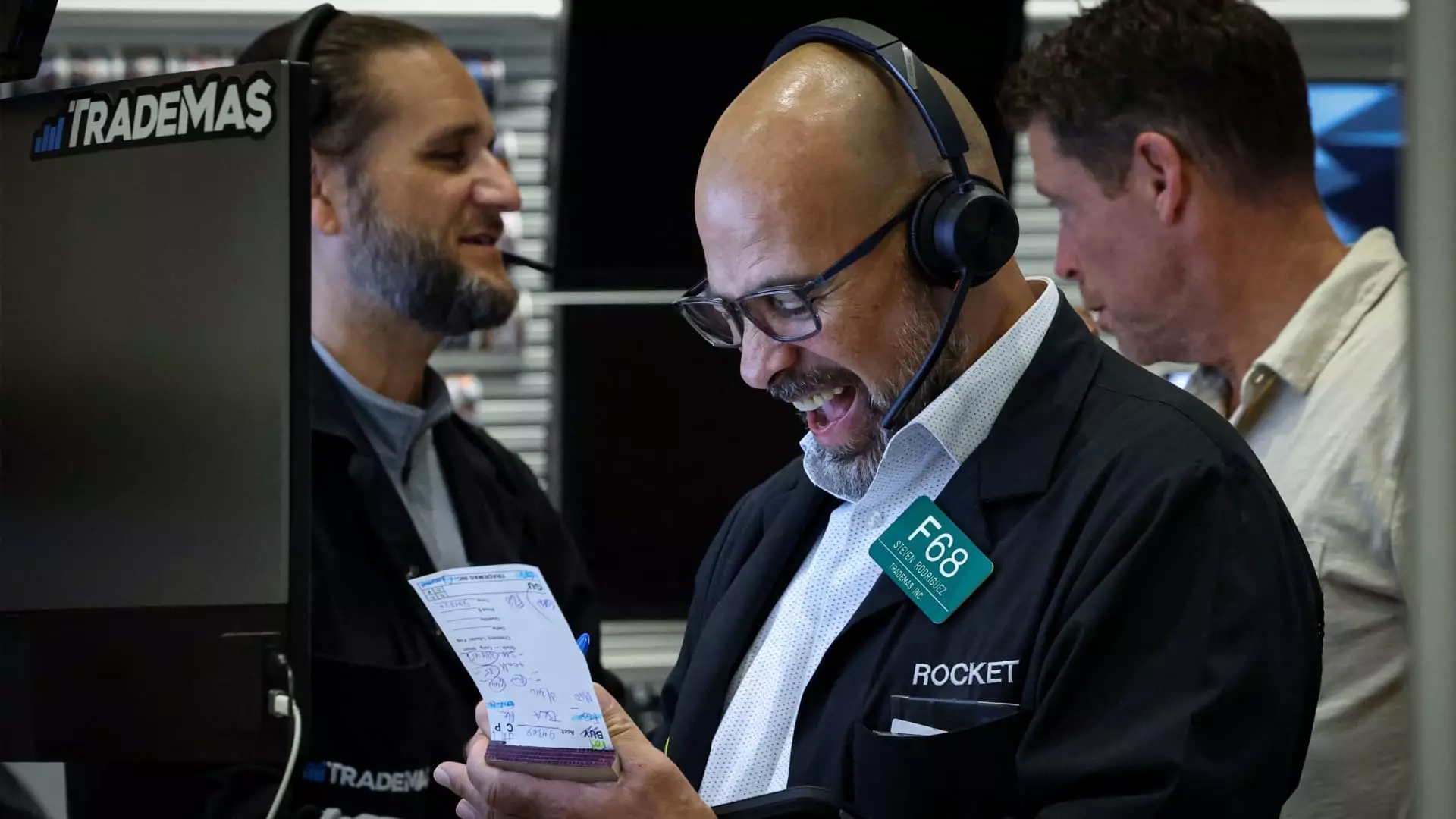In recent weeks, the financial headlines have painted a picture of optimism, driven by expectations that the Federal Reserve may soon pivot toward rate cuts. This narrative, however, feels increasingly tenuous—a carefully crafted illusion designed to keep investors engaged and markets buoyant. The surge in U.S. equity markets, particularly the S&P 500, seems more like a psychological playground than a reflection of genuine economic stability. While investors chase new highs with SPDR S&P 500 ETF Trust (SPY), the undercurrents tell a different story—one embedded with caution and skepticism.
The idea that a September rate cut is imminent rests heavily on the tone of Federal Reserve Chairman Jerome Powell’s signals. Yet, beneath the surface, the data paints a different picture. The Fed’s independence remains under scrutiny, especially given mounting political pressure from the Trump administration to lower interest rates. Powell’s recent comments appear more like a strategic deflection—an effort to maintain credibility and avoid being swayed by external influences—rather than a firm commitment to policy shifts. In reality, the markets are caught between false hope and real structural challenges that the Fed’s rhetoric may disguise rather than address.
The Illusive Power of Central Bank Deliberations
Central bank meetings, particularly those at Jackson Hole, often serve as catalysts for volatility. Historically, these gatherings have exposed the fragility of market confidence, threatening to tip the scales toward downturns or rallying points. Despite the surface-level optimism, recent days have witnessed a series of small declines in the S&P 500—a 1.4% drop over five days—which underpins the fragility of current investor sentiment.
The CME Group’s FedWatch tool highlights the uncertainty that persists around rate movements. The ebb and flow of probability estimates for a September rate cut—from over 90% to around 60%, then back above 90%—illustrate how market participants are navigating the complex confidence landscape. It’s a game of psychological ping-pong, where perceived policy signals influence action but often mask deeper economic vulnerabilities. The markets are increasingly vulnerable to shocks—both from external geopolitical risks and internal systemic weaknesses—that could swiftly reverse the prevailing optimism.
Political Influence and the Reality of Independence
The influence of political pressure on Federal Reserve decisions is undeniable yet deeply problematic. Former President Trump’s persistent calls for aggressive rate cuts serve as a stark reminder of how political agendas can attempt to sway central bank neutrality. Powell’s response, emphasizing data dependency and independence, seems more like a guarded stance than a genuine policy stance. This tug-of-war adds a layer of uncertainty that investors often overlook, preferring the narrative of a resilient economy to the uncomfortable truth of underlying vulnerabilities.
Moreover, the focus on the labor market’s health adds to the unsettling picture. With ongoing debates about inflation, wage growth, and employment, the Fed’s primary concern appears to center on maintaining jobs rather than fueling an overvalued rally. This perspective underscores a subtle but significant shift: the market’s recent gains are less a testament to robust growth and more a reflection of speculative enthusiasm.
The Risks Behind the Illusory Calm
Beyond mere speculation, a more pressing concern is the complacency that has settled into investor psychology. The recent trading strategy—selling SPY puts and purchasing calls with expiry just past the Fed meeting—reflects an acknowledgment of potential volatility. Yet, it also reveals overconfidence; investors believe they can navigate a market riding a fine edge of all-time highs and potential downturns.
While some justify these trades by pointing to technical break-even levels around 651, the risk lies in the Council of Market Realities that better signaling and transparency are being sacrificed at the altar of short-term gains. The truth is, markets are fundamentally fragile; mounting economic headwinds—ranging from inflationary pressures to geopolitical tensions—remain unaddressed by the complacent optimism of financial pundits. This disconnect risks igniting a sharper correction once reality asserts itself.
The Power of Caution in a Capped Market
Amidst this landscape, the role of cautious optimism—bolstered by strategic trades—becomes increasingly vital for investors who refuse to throw caution entirely to the wind. The market’s late-stage rally is less a sign of a healthy economy and more a symptom of what can only be described as a bubble of hope. Both political and economic uncertainties suggest that the current highs might be a mirage, shortly giving way to correction and turmoil.
For the disciplined investor, maintaining awareness of the deeper risks—rather than succumbing to the superficial allure of new highs—is essential. It is plausible, even likely, that the market’s current resilience is a result of policymakers’ words rather than underlying economic strength. This makes the pursuit of cautious strategies, balancing risk and opportunity, all the more critical in a landscape driven by illusion rather than genuine progress.

